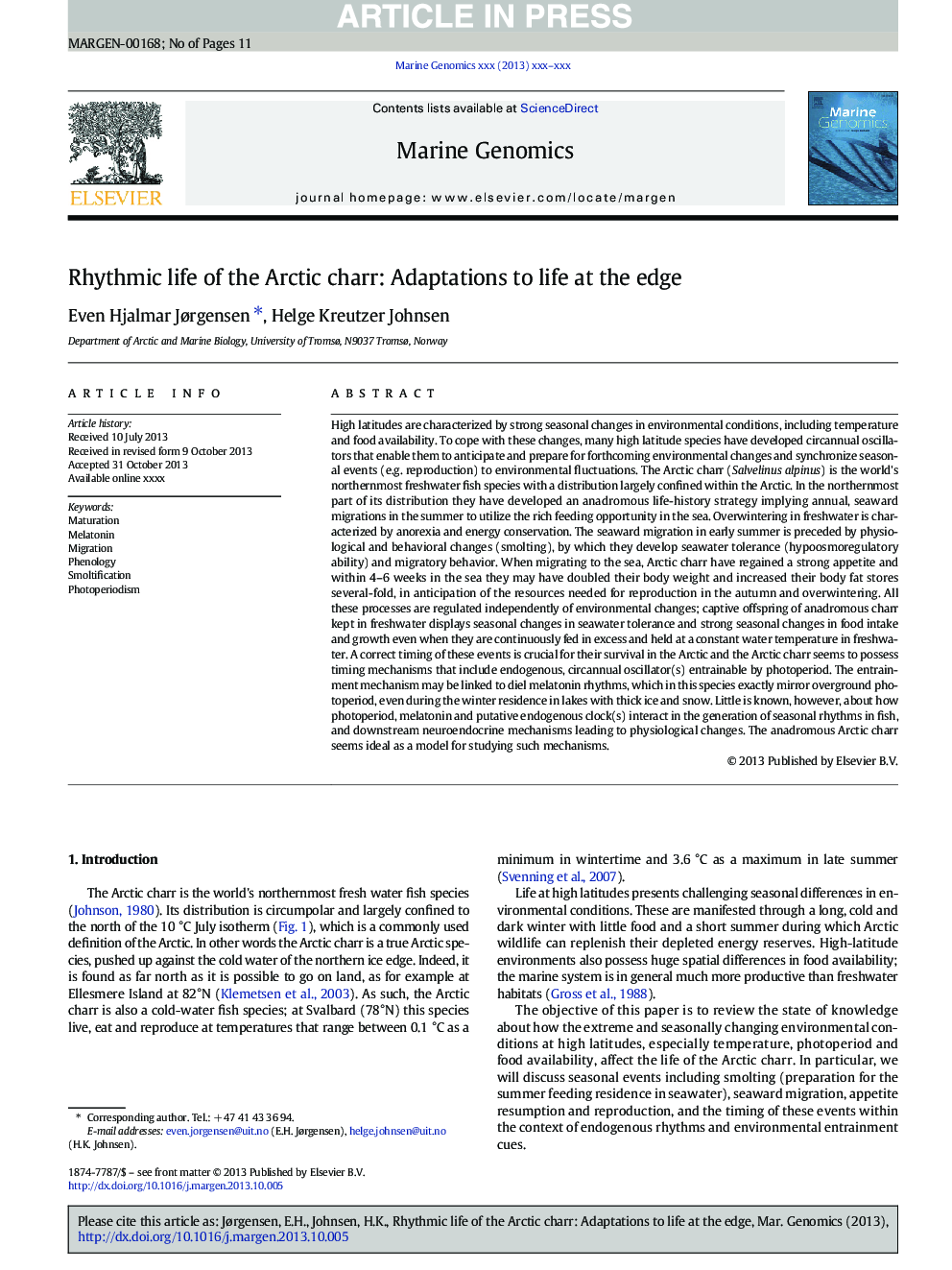| Article ID | Journal | Published Year | Pages | File Type |
|---|---|---|---|---|
| 8388713 | Marine Genomics | 2014 | 11 Pages |
Abstract
High latitudes are characterized by strong seasonal changes in environmental conditions, including temperature and food availability. To cope with these changes, many high latitude species have developed circannual oscillators that enable them to anticipate and prepare for forthcoming environmental changes and synchronize seasonal events (e.g. reproduction) to environmental fluctuations. The Arctic charr (Salvelinus alpinus) is the world's northernmost freshwater fish species with a distribution largely confined within the Arctic. In the northernmost part of its distribution they have developed an anadromous life-history strategy implying annual, seaward migrations in the summer to utilize the rich feeding opportunity in the sea. Overwintering in freshwater is characterized by anorexia and energy conservation. The seaward migration in early summer is preceded by physiological and behavioral changes (smolting), by which they develop seawater tolerance (hypoosmoregulatory ability) and migratory behavior. When migrating to the sea, Arctic charr have regained a strong appetite and within 4-6Â weeks in the sea they may have doubled their body weight and increased their body fat stores several-fold, in anticipation of the resources needed for reproduction in the autumn and overwintering. All these processes are regulated independently of environmental changes; captive offspring of anadromous charr kept in freshwater displays seasonal changes in seawater tolerance and strong seasonal changes in food intake and growth even when they are continuously fed in excess and held at a constant water temperature in freshwater. A correct timing of these events is crucial for their survival in the Arctic and the Arctic charr seems to possess timing mechanisms that include endogenous, circannual oscillator(s) entrainable by photoperiod. The entrainment mechanism may be linked to diel melatonin rhythms, which in this species exactly mirror overground photoperiod, even during the winter residence in lakes with thick ice and snow. Little is known, however, about how photoperiod, melatonin and putative endogenous clock(s) interact in the generation of seasonal rhythms in fish, and downstream neuroendocrine mechanisms leading to physiological changes. The anadromous Arctic charr seems ideal as a model for studying such mechanisms.
Related Topics
Physical Sciences and Engineering
Earth and Planetary Sciences
Earth and Planetary Sciences (General)
Authors
Even Hjalmar Jørgensen, Helge Kreutzer Johnsen,
